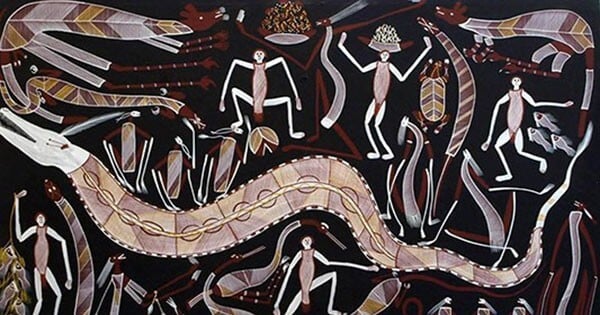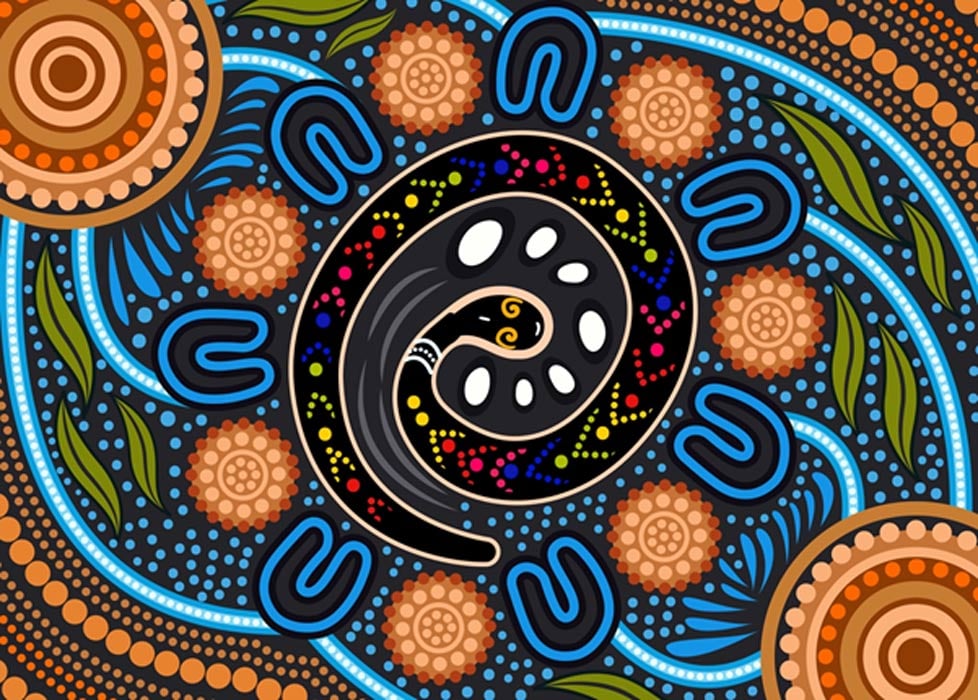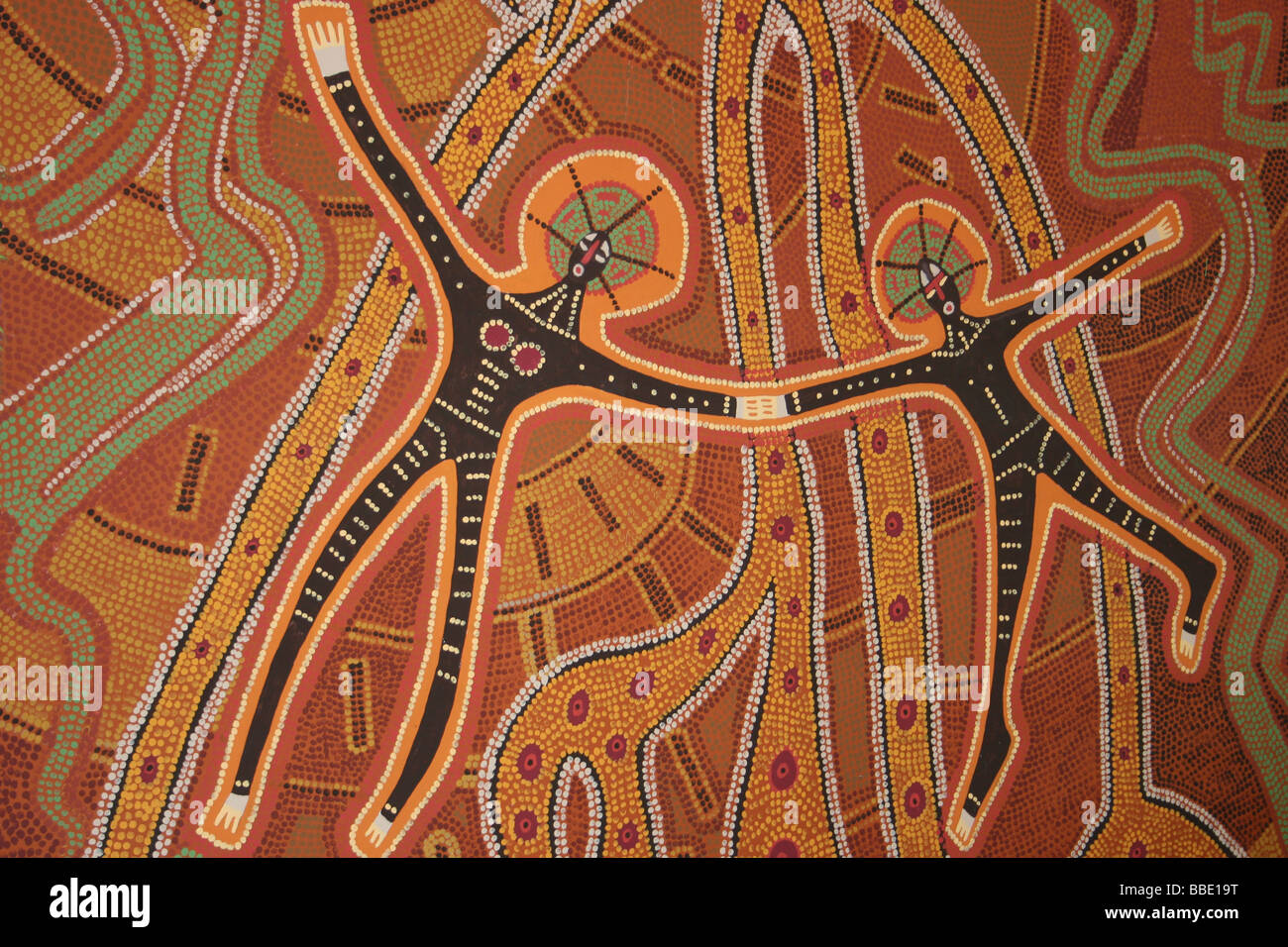Woven Through Time: How Dreamtime and Enduring Traditions Shape Aboriginal Spirituality
Woven Through Time: How Dreamtime and Enduring Traditions Shape Aboriginal Spirituality

Aboriginal spirituality is a vibrant tapestry, woven from the threads of ancient wisdom, enduring traditions, and the profound connection to the land. This intricate web is anchored by the Dreamtime, a concept that transcends mere mythology and acts as the bedrock of Aboriginal belief systems. Through the lens of Dreamtime stories, rituals, and ancestral knowledge, Aboriginal people find meaning, purpose, and a deep sense of belonging within their communities and the natural world.
The Dreamtime: A Tapestry of Creation and Connection
Related Articles: Woven Through Time: How Dreamtime and Enduring Traditions Shape Aboriginal Spirituality
- A Tapestry Of Cultures: Exploring The Diverse Tribes And Languages Of Western Australia
- Dreamtime’s Guiding Light: How Aboriginal Theories Shape Lives And Landscapes
- A Taste Of Paradise: Exploring The Vibrant World Of Australian Fruits
- Dreamtime: The Heartbeat Of Aboriginal Culture
- The Buzz About Stingless Bees: Exploring Australia’s Unique Pollinators
The Dreamtime, also known as the "Dreaming" or "Tjukurrpa," is not merely a distant past but a timeless realm that continues to influence the present. It is a time of creation, where ancestral beings shaped the land, its features, and the very essence of life. These beings, often depicted in intricate rock art and ceremonies, are not simply figures from the past but enduring forces that continue to guide and inspire.
The Dreamtime is not a singular event but a continuous process. It encompasses the stories, songs, dances, and rituals that transmit knowledge and understanding across generations. These narratives are not just entertaining tales but profound teachings that reveal the interconnectedness of all things, the importance of respect for the land, and the responsibility to care for it.
Enduring Traditions: The Living Legacy of the Dreamtime
Aboriginal traditions are not static relics of the past but dynamic expressions of the Dreamtime’s enduring influence. These traditions serve as the foundation for Aboriginal spirituality, guiding their worldview, social structures, and relationship with the natural world.
1. Kinship and Community: The Dreamtime narratives emphasize the importance of kinship and community. These stories establish complex social structures based on ancestral connections, defining roles, responsibilities, and obligations within each clan and tribe. This intricate web of relationships ensures the well-being of the community and the preservation of cultural knowledge.
2. Land and Belonging: The Dreamtime stories are intimately linked to the land. They narrate the journeys of ancestral beings, their creation of specific landscapes, and the significance of each geographical feature. This connection fosters a deep sense of belonging and responsibility towards the land, ensuring its preservation and sustainable use.
3. Ritual and Ceremony: Rituals and ceremonies are central to Aboriginal spirituality, providing a tangible link to the Dreamtime and the ancestral beings. These practices, often involving intricate dances, songs, and storytelling, serve multiple purposes:
- Reconnecting with the Ancestors: Rituals allow individuals to connect with the spiritual realm and seek guidance from their ancestors.
- Preserving Knowledge: Ceremonies act as repositories of cultural knowledge, transmitting stories, songs, and traditions across generations.
- Maintaining Harmony: Rituals play a vital role in ensuring the balance and harmony of the natural world.

4. Art and Symbolism: Aboriginal art is not merely aesthetic but a powerful expression of Dreamtime stories and ancestral knowledge. From intricate rock art to vibrant paintings on bark and canvas, these artworks communicate complex narratives, symbolism, and spiritual connections.

5. Language and Storytelling: Language is an integral part of Aboriginal spirituality. Each language contains a unique vocabulary that reflects the specific landscape, flora, fauna, and cultural practices of a particular region. Storytelling, an essential form of communication, allows individuals to share knowledge, preserve cultural heritage, and connect with the Dreamtime.
The Impact of Colonization and Resilience
The arrival of European settlers in Australia had a profound impact on Aboriginal spirituality. Displacement from traditional lands, forced assimilation policies, and the suppression of cultural practices led to a significant loss of knowledge and the erosion of traditional beliefs.
However, despite these challenges, Aboriginal spirituality has shown remarkable resilience. Communities have continued to practice their traditions, adapt to new circumstances, and reclaim their cultural heritage. Today, there is a growing movement to revive and revitalize Aboriginal languages, arts, and rituals, ensuring the survival of these vital expressions of their unique spiritual identity.
The Enduring Significance of Dreamtime and Tradition

The Dreamtime and enduring traditions continue to shape the lives of Aboriginal people today. They provide a framework for understanding the world, navigating social relationships, and connecting with their ancestral heritage. The Dreamtime stories offer a sense of belonging, purpose, and responsibility, guiding individuals to live in harmony with the land and each other.
The Future of Aboriginal Spirituality
The future of Aboriginal spirituality lies in the hands of the next generation. As young people embrace their cultural heritage, they are revitalizing traditional practices and finding innovative ways to express their spirituality in the modern world.
The ongoing struggle for recognition, land rights, and cultural sovereignty is inextricably linked to the preservation and revitalization of Aboriginal spirituality. As they reclaim their voices and narratives, Aboriginal people are ensuring that their unique worldview and spiritual connection to the land will continue to thrive for generations to come.
FAQ
Q: What is the Dreamtime?
A: The Dreamtime, also known as the "Dreaming" or "Tjukurrpa," is a concept central to Aboriginal spirituality. It is a timeless realm where ancestral beings created the land, its features, and the essence of life. The Dreamtime is not a distant past but a continuous process that continues to influence the present.
Q: How do Dreamtime stories shape Aboriginal spirituality?
A: Dreamtime stories provide a framework for understanding the world, navigating social relationships, and connecting with ancestral heritage. They explain the creation of the land, the interconnectedness of all things, and the importance of respect for the natural world.
Q: What are some examples of enduring Aboriginal traditions?
A: Enduring traditions include kinship systems, land management practices, rituals and ceremonies, art forms, language, and storytelling. These traditions are expressions of the Dreamtime’s enduring influence and serve to preserve cultural knowledge and connect individuals with their ancestral heritage.
Q: How has colonization impacted Aboriginal spirituality?
A: Colonization has had a profound impact on Aboriginal spirituality, leading to displacement from traditional lands, forced assimilation policies, and the suppression of cultural practices. This has resulted in a significant loss of knowledge and the erosion of traditional beliefs.
Q: What is the future of Aboriginal spirituality?
A: The future of Aboriginal spirituality is bright. Young people are embracing their cultural heritage, revitalizing traditional practices, and finding innovative ways to express their spirituality in the modern world. The ongoing struggle for recognition, land rights, and cultural sovereignty is essential for the preservation and revitalization of Aboriginal spirituality.

Closure
Thus, we hope this article has provided valuable insights into Woven Through Time: How Dreamtime and Enduring Traditions Shape Aboriginal Spirituality. We thank you for taking the time to read this article. See you in our next article!


